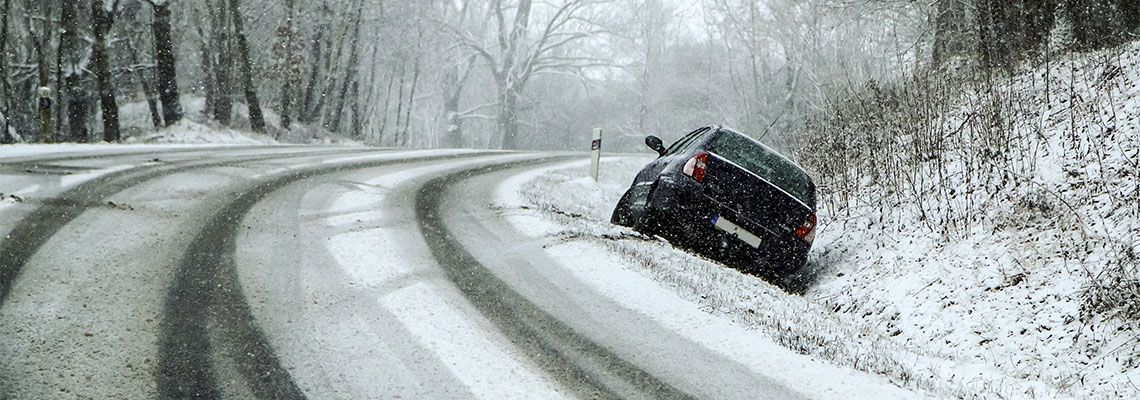
What You Should Know About Winter Driving Accidents
It's that time of year again. While winter in Colorado is a beautiful season, it also brings hazardous road conditions that can increase the risk of car accidents. As a driver, it is important to know how to stay safe on the roads during the winter months. And what to do if you find yourself in the unfortunate situation of a winter driving accident.
These types of car accidents can be particularly hazardous, often leading to serious injuries. According to insights from a study conducted by The Zebra, an insurance comparison company, it’s disheartening to note that nearly 2000 lives are lost and over 135,000 individuals sustain injuries annually as a result of car accidents on icy and snowy roads.
Understanding the legal dimensions of these incidents is vital in safeguarding your rights and seeking recovery for any damages incurred. At Mark A. Simon, Attorney at Law, our Denver car accident attorney has extensive experience in handling winter driving accidents and can help you navigate the legal process.
If you need legal guidance about an insurance claim or personal injury lawsuit, don't hesitate to contact us and set up a consultation. We work with clients throughout Aurora, Commerce City, Englewood, Arvada, Lakewood, Centennial, Wheatridge, and Thornton.
Colorado Is a Fault Insurance State
In Colorado, we follow a fault insurance system. Essentially, this means that the driver who's at fault for causing the accident bears the responsibility of covering the damages resulting from it. The relevance of this system to winter driving accidents can't be understated — it directly impacts the recovery of your compensation.
If you're injured in a winter driving accident, it's vital to gather evidence to prove the other driver's negligence or fault in the accident. In other words, demonstrating how their actions led to the accident is crucial in securing compensation.
This might sound overwhelming, especially if there are serious injuries involved, but don't worry. An experienced personal injury attorney will be able to guide you every step of the way and advocate on your behalf while you focus on restoring your health.
Determining Liability for Weather-Related Negligent Behavior
Amid winter weather conditions, certain negligent behaviors amplify the risk of accidents. Speeding and reckless and careless driving are prime examples of such behavior that can lead to accidents in snowy or icy conditions. If a driver is speeding or driving recklessly in winter weather and causes an accident, they can be held liable for the damages resulting from the accident.
Tailgating, or following another vehicle too closely in winter weather, can also be considered negligent behavior. This reduces the ability to stop safely and increases the risk of rear-end collisions. Failing to clear snow and ice from a vehicle before driving can also be considered negligent, as it creates hazards for other drivers on the road. These are just a few examples of how weather-related behaviors can contribute to accidents and potential liability.
Were you involved in a winter weather-related car accident? Could it have been avoided had it not been for a reckless driver? As your legal team, we're committed to helping you establish the liability of the negligent party and fight for your right to compensation.
Colorado Car Safety Laws
Colorado has specific car safety laws designed to ensure safe driving in winter weather. For instance, there's the Chain Law, which mandates commercial vehicles and trucks to have chains when traveling on certain highways during specified periods. This law is instrumental in helping vehicles maintain traction and prevent traffic delays and road closures.
Another key regulation is the Minimum Tire Tread requirement. This law requires all vehicles to have a minimum tire tread depth of at least 3/16 inches, ensuring that tires have sufficient grip on snowy or icy roads.
Colorado's Left Lane Law, also known as the "Slowpoke Law," is also important to keep in mind. This law mandates that drivers must not continue to occupy the left-most lane (also referred to as the passing lane) on highways if they are moving slower than the normal speed of traffic, regardless of the speed limit. The only exceptions are when a driver is preparing for a left turn or overtaking and passing another vehicle. This is especially critical during winter driving, where maintaining a steady and consistent traffic flow can prevent unnecessary accidents.
Tips for Driving in Winter Weather
Navigating the winter weather safely requires following certain tips. Start by clearing your car of snow and ice before driving. Visibility is crucial in preventing accidents. Also, while driving in winter weather, it's recommended to perform one action at a time — accelerating, turning, or braking. This helps maintain control and reduces the risk of slide-outs or spin-outs.
Other tips include:
maintaining momentum when traveling uphill,
keeping headlights low to improve visibility,
avoiding using cruise control,
and increasing your following distance to allow for safe braking.
Understand Your Rights After a Winter Accident
Our experienced auto accident attorney is familiar with the challenges of winter driving and the potential legal complexities arising from related accidents. We're here to help you navigate these issues, fight for the full compensation you deserve, and protect your rights throughout the entire legal process.
If you've been injured in a winter driving accident, reach out to us at Mark A. Simon, Attorney at Law, for dedicated and compassionate legal representation. From our law firm in Denver, Colorado, we serve residents of Aurora, Commerce City, Englewood, Arvada, Lakewood, Centennial, Wheatridge, and Thornton.

